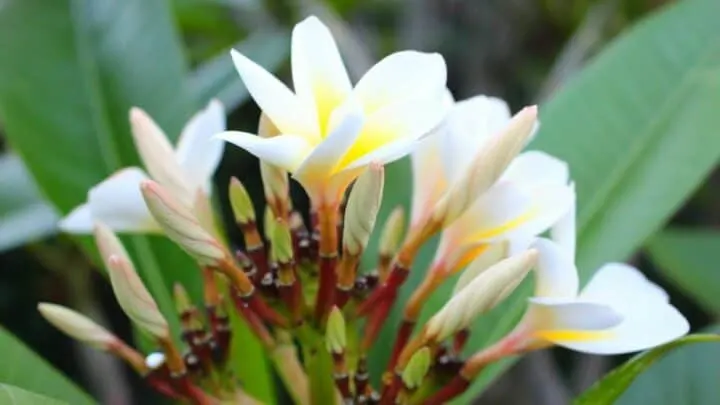Plumerias are also known as frangipani are synonymous with tropical according to the University of Florida
One of the most cultivated Plumeria is Plumeria rubra according to Oxford University.
Plumeria almost seems to thrive on neglect.
If you’ve studied how to grow plumeria plants, you’ll know it’s a tropical that doesn’t need lots of watering.
That’s where the neglect part comes in.
It will survive spells of drought, but when you do water it, that’s when you need to be careful.
Plumeria stem rot is a common disease.
They’re more drought tolerant than they are at coping in moist humid soil.
Get the soil type wrong that leaves the roots in soggy soil, root rot is likely, which then gradually extends to the stem.
Plumeria stem rot spreads fast.
It’s not just caused by the soil lacking drainage though. There are multiple causes that can lead to stems and branches on plumeria rotting.
Read on to discover the symptoms of plumeria stem rot, how to treat it, and the best methods to protect against it in the future.
Plumeria stem rot
Plumeria stem rot often starts with root rot that then extends to the stem. Root pruning is the fix. When the soil is draining fine and the roots are firm it’s possible a fungal pathogen has gotten into the stem, causing them to decay. Holes made by insects make plumeria plants susceptible to stem rot.

Plumeria Stem Rot
How to identify plumeria stem rot in cuttings
Plumeria stem rot is of primary concern in the first year of planting, especially when rooting plumeria cuttings in water.
If the cutting is infected with any fungi or bacterial infection that caused stem rot on the plant the cutting was taken from, it will not root.
Instead, it’ll rot from the base, turning the entire stem brown.
All the leaves on infected stems wilt and discolor.
Eventually, the entire stem rots to the core shrivels up, and turns brown or black.
It looks like a far cry from a healthy stem.
Once it’s too far gone, the stem won’t have the support to stand upright, so it will topple.
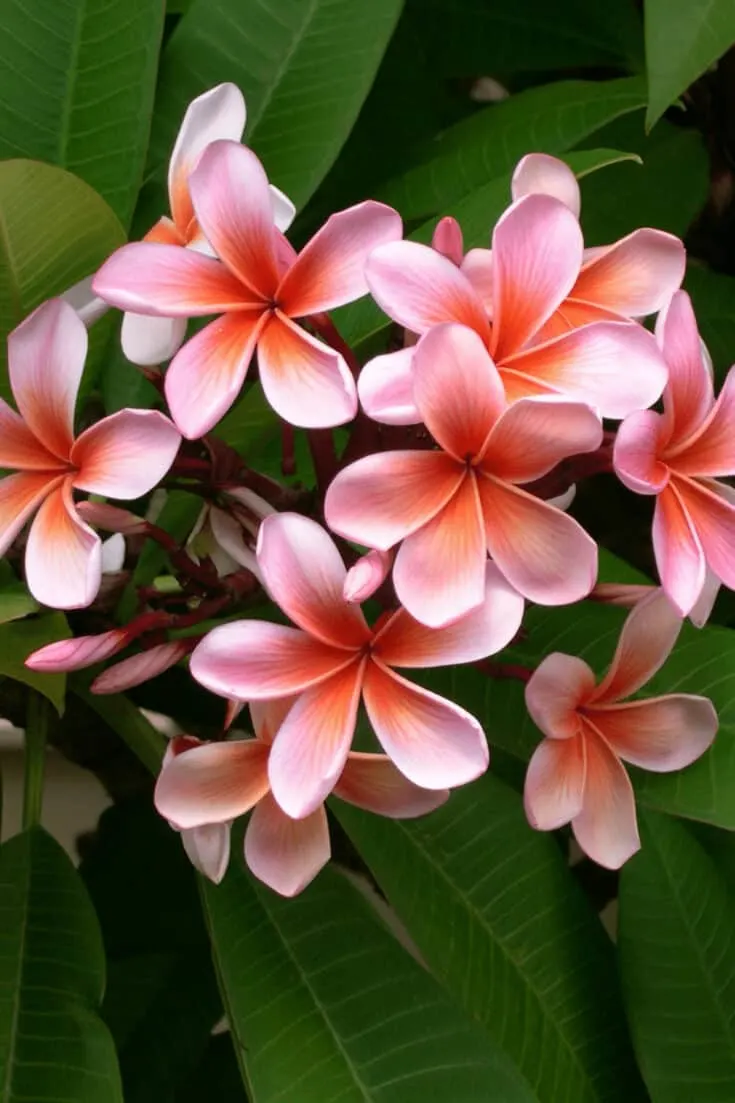
Pests can create holes in plumeria stems and thus lead to stem rot
Identifying stem rot on mature plumeria plants
On mature plumeria plants, a giveaway sign of stem rot is a hollow center. The spot where the rot is showing on the stem, under it will be decaying.
If it’s not removed to contain the spread, the entire inside of the stem decays away to nothing.
It’ll eventually become hollow. Once that spreads, the trunk will collapse.
Of utmost importance is to get all the damaged leaves and roots off the plant.
On mature plants, the goal is damage control. You need to stop the spread of stem rot diseases.
It is rare for mature plumeria plants to develop stem rot, but it can still happen.
One of the common ways is when there’s a nearby plant infected with a fungal pathogen, and perhaps mites, aphids, or other insects have bitten holes into the stem creating entryways for pathogens to infect the stems.
A sign that there are insects damaging the plant is black spots on plumeria leaves.
When you see that, treat the pest infestation before the damage gets so extensive that it weakens the stems, making it susceptible to stem rot diseases.
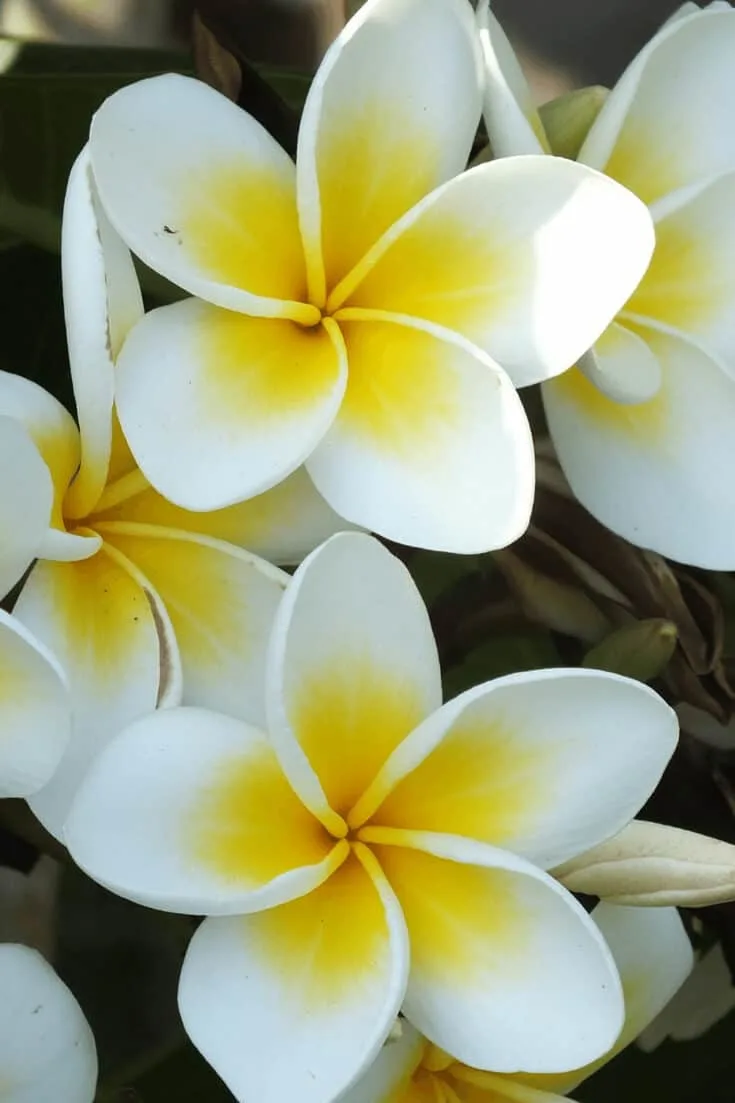
Plumeria needs well-draining soil to thrive
Winter burns look like stem rot
Winter burns also cause brown lesions and rot on the stems of plumeria.
Damage caused by burn looks like rot but it doesn’t spread.
It won’t heal either though. You’ll need to cut the damaged part for healthy stems to grow in.
This can happen if you overwinter a plumeria in a shed but have it near an air vent, or a heater.
Treating plumeria stem rot on mature plants
It’s the spores that cause stem rot on mature plumeria plants. Prune the infected branches, stems, and twigs. New ones don’t take long to grow back.
Stem rot spreads fast so wherever you see signs of decay on a mature plant, trace the rot back to the soil line and trim off all the diseased parts on the plant from the lowest point.

Plumeria stem rot often is caused by root rot
How to prevent plumeria stem rot
Once stem rot sets in, it’s often accompanied by fungal diseases. When that happens, you can’t root cuttings from infected branches.
For rooting a cutting, you need 4 to 6 inches of a healthy stem. If it’s even started to brown, it will not root.
Apply a rooting hormone that contains a fungicide
When you’re rooting from cuttings, use a rooting hormone that contains a fungicide agent. If any fungal spores are around, the fungicide will kill the pathogens giving the stem a fighting chance of rooting.
Practice good sanitation
Whenever you’re pruning any plant or tending to any area of your garden, the tools you use should be sterile.
Fungi and bacterial spores can transfer to your garden tools.
Rubbing alcohol (70% isopropyl) is an effective tool sanitizer to prevent spores from transferring on your tools.
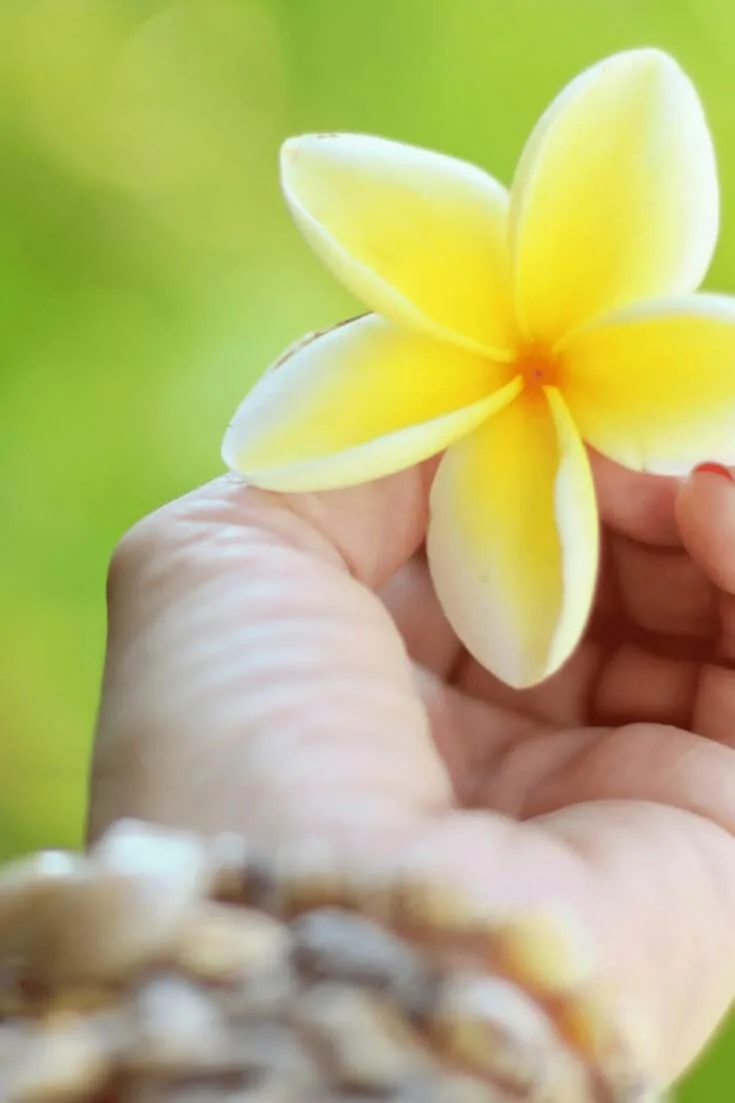
To fix stem rot caused by root rot in plumeria plants trims the rotting roots off
Clear what you see laying around
In the same spirit of avoiding transference, fallen leaves and other garden debris can have spores on them that are spread by wind, rain, or by insects.
For that reason, it’s best to keep the areas around all your plants (not just plumeria) clear of debris to prevent pathogens from spreading between plants.
Use a well-draining potting mix or add compost to your garden soil
If your soil isn’t fast-draining, it’ll need to be improved to prevent plumeria roots from sitting in soggy soil.
Compost is good at increasing drainage in your garden soil.
If your soil is clay-heavy, consider growing in a raised garden bed, or growing your plumeria as a potted plant.
When bringing plumeria indoors to overwinter, be very cautious of temperatures.
When heat levels drop below 40°F (4°C), that’s when stem rot becomes not just possible, but likely to happen.
Especially for young plants being overwintered for the first time.
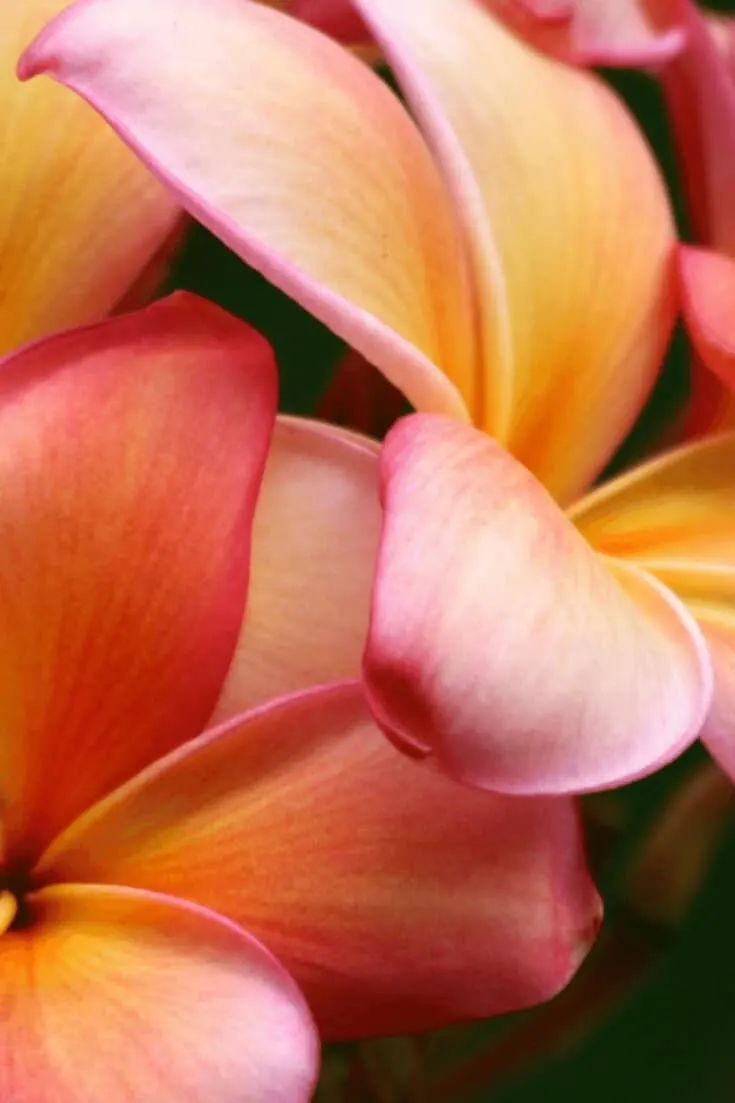
Temperatures below 40 degrees Fahrenheit (4 degrees Celsius) can lead to stem rot
Frequently Asked Questions About Plumeria Stem Rot
What diseases cause plumeria stem rot?
Three common fungal infections that thrive in cool moist soil are rhizoctonia, pythium, and fusarium. Each originates in the soil, rot the roots first, then cause stem rot on plumeria plants. The spores of each can be transferred between plants, causing the infections to spread by wind, rain, or insect bites.
What size of a plant pot does a plumeria need?
Despite plumeria being a flowering tree, its rooting system is shallow, but it has a wider spread. For that reason, to keep the roots healthy and avoid rot in a pot, choose one that has more width than depth. The pot diameter should be 15-inches minimum.

Daniel has been a plant enthusiast for over 20 years. He owns hundreds of houseplants and prepares for the chili growing seasons yearly with great anticipation. His favorite plants are plant species in the Araceae family, such as Monstera, Philodendron, and Anthurium. He also loves gardening and is growing hot peppers, tomatoes, and many more vegetables.

